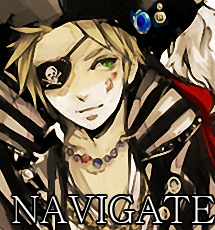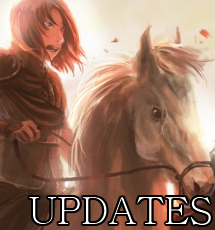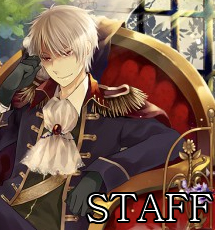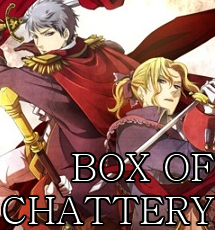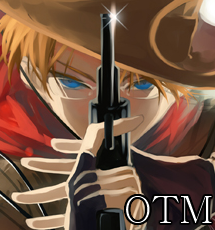Post by The Game Master on Jun 1, 2013 14:34:02 GMT -8
Dragon Tamers
The relationship between the dragon and tamer is symbiotic—in other words, both parties benefit.
Dragon tamers are people who were chosen by previous existing dragon tamers and given a dragon egg (sometimes two) to hatch. Upon hatching, the dragon and its tamer often develop an unbreakable emotional bond, and this bond is later sealed with the sharing of blood between the two. Blood bonds may take place at any time and do not have to happen immediately after hatching, but they often happen right away, as dragonlings will scratch or bite their tamer upon the first meeting. Blood bonding needs to take place during a very specific time frame in a dragon’s life, and is only possible from hatching up until three years of age; dragons older than that are too mature to form the blood bond, though emotional bonds are still possible.
Blood bonding is extremely selective. Dragons will only create blood bond with bi-pedals, such as humans, elves, and dwarves, but they refuse to bond with giants. Half-breeds are never bonded with–many theories have been put forth on the matter, but a general poll taken by various dragons revealed that dragons naturally don’t trust creatures with two bloods running through their veins, and certainly do not trust them enough to create a blood bond. Emotional bonds can still be created but there is a general tension between hatchlings and most species that prevents a bond to take place.
Though the dragon will not have any human blood flowing through its veins after the blood bond, humans end up with dragon blood flowing through their bodies. Because of this, dragon tamers are often seen as having chosen to be impure instead of having been born that way and are ridiculed even more for it. Through the blood bond, a tamer’s lifespan is extended and the aging process slowed drastically, while the dragon’s lifespan is shortened. If either dies, the other perishes with them. The relationship between dragon and tamer is one that allows communication without words, often knowing what the other is going to do or wants to do simply by the feeling they get from the other, though they will still speak to each other in a common tongue. Blood bonds are extremely difficult to break—but it’s not impossible. It’s just incredibly difficult and takes an incredible amount of mental power. Most times, a break will not be attempted unless one half of the party is dying and does not wish for the other to die with them—the amount of energy required to break the bond, however, is difficult to muster when one is dying, and usually the break is unsuccessful. There have been few instances in history when a dragon broke the bond and allowed their tamer to live on when they could not, and more instances of when a tamer broke the bond to let their dragon live. The loss of their lifelong partner, however, hits the surviving member hard, and they do not often live past five years after the other’s death.
Dragon tamers are always chosen when they are children, especially young children. Adults are never chosen and teenagers are rarely. The reason for this is the minds of young children are purer. They do not yet understand the reasoning behind hatred for different species and can be taught to be open-minded. Teenagers and older are more difficult to change the viewpoints of, and in most cases it is near impossible.
No matter what, dragon tamers must have the barest minimum of magic in their blood. Dragon blood is magical and without magic existing in the tamer’s blood, dragon blood will not take and the blood bond is unable to form. Dragons are able to smell magic, so there are never instances of a tamer being chosen that can not bond. Despite the added magic in their blood through the bond, tamers are not able to cast any spells. In their case, the magic is completely dormant and will never, under any circumstances, awaken.
Tamers are required to be incredibly skilled at a certain weapon. They go through rigorous training with two weapons, particularly the bow and arrow and the sword. Some tamers choose other weapons, such as halberds or spears, but the standard weapons are swords and bows. They are required to become proficient with at least one and standard with the other. One must be usable in close combat and the other usable in long distance. Masters oversee this training and often teach the weapons they use. The bow and arrow is the most commonplace long-distance weapon. Rarely are crossbows and javelins used.
To avoid a large concentration of tamers in one area, which would naturally become a target, there is never more than one tamer chosen in any given village. The only two that will inhabit the area are the chosen tamer and the master. Spreading out the teachings are to ensure the survival of the children—if even two were chosen in a town, the news would get out quickly and their lives would be put in danger. Often, tamers are widespread and none live in villages near to each other. Intense investigations of villages are done in order to ensure that the area is safe to harbor a new tamer. Due to this secrecy, dragon tamers are often difficult to find, as they hide out of fear of extermination by the hands of their own friends. This simply makes their numbers seem smaller than they actually are, though dragon tamers are very rare in general.
Dragons themselves are also a rarity, due to mass hunting. Coming across a wild dragon is said to bring good luck later in life, and if you can persuade the dragon to give you a gift (ie. a scale, a tooth), cherish it, for you may never get the chance again, and it may save your life in a confrontation with another dragon. To receive a dragon egg is almost unheard of. This has only ever happened to tamers, who were entrusted with the eggs of female dragons that were aware of their limited time.
Tamers are fiercely protective of their dragon friends and will do everything in their power to prevent the death of more dragons. They’re extreme advocates of dragon culture and insist that dragons are equal to humans, or even above them. To challenge their dragon is to challenge them. To threaten their dragon is to threaten them. And it works the other way around too.
Riding dragon-back is often a dangerous task. Bare-back is dangerous and without the proper fabric, skin can be rubbed raw from the scales. Thick, leather seats are placed in the junction between the dragon's neck and shoulders, where there is a spine missing. Buckles and tethers are made of durable materials and are wound around the front of the dragon and behind its front arms. Harnesses are to be well secured and well-kept as even the slightest wear and tear can lead to the death of a trainer, be it the saddle slips off or it breaks mid-flight. Blacksmiths are often recruited for this task, but only the best are able to make long lasting harnesses. As dragons grow, harnesses must be replaced often. If they are not replaced regularly until the dragon has finished growing at a rapid pace, harnesses become tight and uncomfortable and are more likely to snap.
Night flying is a task that requires immense amounts of trust and skill. Human beings have poor sight in the dark, leaving them blind to flounder under their eyes adjust after a long period. Dragons, however, are able to see perfectly fine. Most tamers avoid night flying if they can help it, as there is little to hunt and navigating is more difficult when neither party knows the route, but in situations where night flying is necessary, the tamer must rely on the dragon on dark nights where the moon and stars are either gone or covered by clouds. When the nights are clear, night riding becomes easier as tamers, if they know how, can navigate by the stars and see with the light of the moon. The biggest issue in night flying, however, is finding prey.
Both become key parts in hunting, as a dragon's diet is almost all meat, and copious amounts are needed to feed. Tamers are often the ones to take the prey down from heights with their bows, or at least hinder the movement of prey so the dragon may swoop down and make the kill. Dragons are always the ones to spot a target. The speed of dragons makes it easier to track prey more quickly, bringing in more food. Though sometimes tamers may go through crises about whether or not eating other animals is moral (though with a dragon around, one would think they wouldn’t), tamers are never able to be vegetarian or vegan. A tamer wouldn’t last two days on that lifestyle, as the lack of proper sustenance would weaken them.

